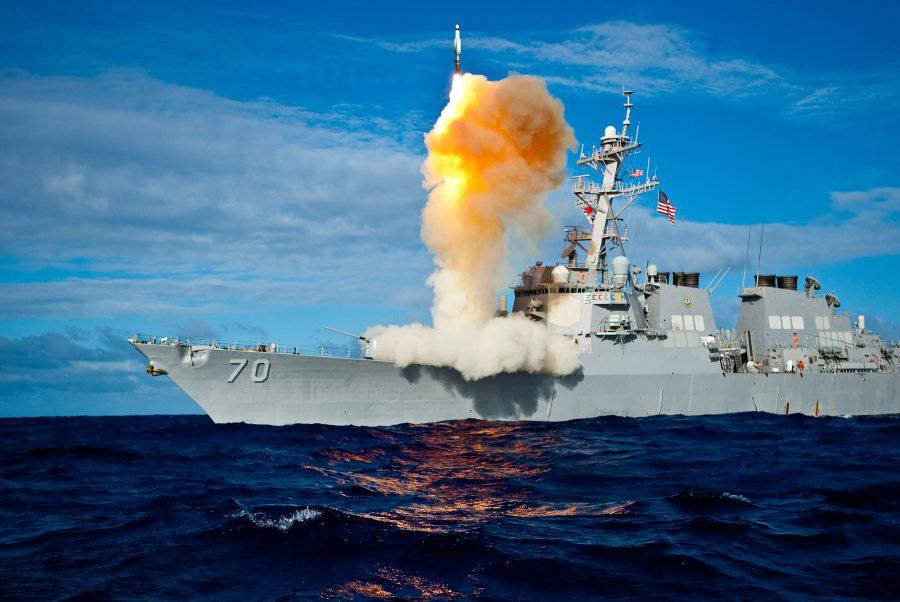US missile defense system left without interceptor missile
Representatives of the US Air Force reported the failure of interceptor missiles such as Raytheon SM-3, which ended on September 2. The Standard Missile (SM) -3 Block IB rocket, according to the declared standards, should intercept all types of intercontinental missiles and become one of the core elements of the new European missile defense system. According to one of the military experts, following the results of the unsuccessful launch of the interceptor, the missile defense development programs created in the United States can be significantly adjusted.
As reported in the official statement, the Standard SM-3 Block IB short-range ballistic missile was launched from a test site located on the island of Kauai (Hawaii) in 09: 53 (17: 53 in Moscow) along the eastern coast of the United States. According to the United States Department of Defense’s missile defense agency, 90 seconds later, an interceptor missile was launched from the onboard drifting cruiser Lake Erie, but this target was not destroyed. Standard SM-3 destroy ballistic missiles, as well as their warheads by directly hitting them. These anti-missiles, according to the plans of the US presidential administration, should be deployed in Romania in 2015, and three years later in Poland. Another failure with tests took place against the background of increasing pressure on Barack Obama and his administration in connection with plans to deploy missile defense elements in Europe.
Recall that the incident with the SM-3 is not the first failure of the US military with the latest weapons for the last time. So, at the beginning of August this year, the Falcon HTV-2, the world's fastest airborne apparatus, crashed in the Pacific Ocean, the main feature of which was the ability to reach speeds of more than 20 times the speed of sound. The super-high-speed aircraft was launched with the help of a special launch vehicle from the US Air Force Vandenberg base in California. After some time the connection with the device was lost. Similar problems also occurred during the first test of this aircraft in the early spring of 2010.
It remains unknown whether this apparent failure will delay the deployment of a missile defense system in Europe. In total, the Pentagon planned to purchase more than 300 anti-missile units of this type for five years at a price ranging from 12 to 15 million dollars for a rocket.
As a source in the US Department of Defense stated in an interview with Aviation Week, the first part of the SM-3 test task - targeting - was carried out successfully. According to the official representative of the Pentagon, obviously, the problem was specifically in the interceptor rocket itself, according to another version, the failure was caused by the poor connection of the rocket with the base vessel from which the launch was carried out.
According to Rick Lehner, a representative of the Agency for missile defense, the results of the investigation will make it clear whether changes will be made to the test program of the SM-3 rocket. Until Friday, 2 September, the military department planned to test such missiles at least twice a year.
While in service with the US military is the previous version of the interceptor missile - SM-3 Block 1A. These interceptors are deployed on US Navy ships patrolling the seas in various parts of the world. In particular, they protect the borders near the states that, according to the White House, are particularly dangerous - in this case we are talking about North Korea and Iran.
American military experts expressed their doubts about the effectiveness of the SM-3 missiles as far back as 2010. While the US Department of Defense claimed that the anti-missile in preliminary tests destroyed 84% of targets, Theodore Postol, a professor at the Massachusetts Institute of Technology, and physicist George Lewis found that the analysis of effectiveness was carried out with irregular calculations and effectively hit targets can be considered the entire 10 -20%. According to the scientists, a significant part of the warheads was simply knocked off the course, and not completely destroyed.
It is worth noting that the intentions of the US Department of State to expand the region of missile defense system coverage causes well-founded concern to Russia. First of all, this is due to the fact that under certain variants this can significantly reduce the effectiveness of Russia's strategic forces and carry an immediate threat to the security of the state. On this occasion, their statements were made not only by representatives of the Ministry of Defense of the Russian Federation, but also by the top leaders of the state, including President of the Russian Federation Dmitry Medvedev.
In his speech in the spring of this year in Skolkovo, the president commented on all assurances of the American government that the missile defense system was not directed against our country: “Usually they tell us: defend ourselves against Iran, or someone else there. They do not have such opportunities - does this mean that all this is being prepared against us? ”In connection with the growing missile defense problem, Dmitry Medvedev reminded that Russia further reserves the unilateral right to withdraw from the current START Treaty if the United States continues to accelerate missile defense development in Europe .

Information